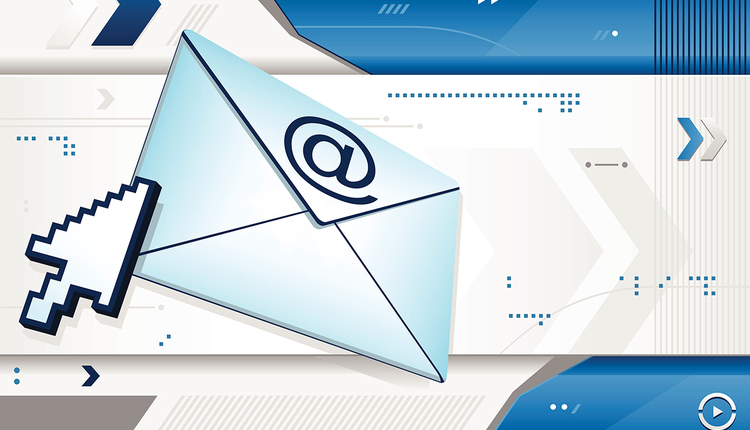Purchasing software can be big and scary because it’s probably not something you do regularly. It’s much like purchasing a car – you’ve finally realized you need to make the investment, but it’s been a long time since you last went through the process. If it’s the first time you are purchasing mailing-specific software, it can be like buying your very first car. You ask yourself, “What is the best option out there?” Much like in the car-buying process, the answer to that question is, “It depends!”
Before evaluating software, you must define your needs as they align with your organizational strategy. There are guidelines to choosing software; some are universal, and some are specific to mailing. Let’s start with universal…
Like any major endeavor, this is a process. A phased approach might look like:
· DISCOVER: What problems am I trying to solve? What are my priorities?
· DEFINE: What are my requirements?
· DETERMINE: What solution best meets my requirements?
In the Discover phase, start by conducting an internal assessment or even a SWOT (strengths, weaknesses, opportunities, threats) analysis to determine factors like end-user skill levels, IT capabilities, local job market, direction of the organization, production capacity, resilience to economic change, executive sponsorship level, and so forth. You don’t need to do this on your own; you should leverage existing information and expertise from across your organization. If possible, engage an objective third party for assistance. If you have limited funds, be creative and leverage sources like experts at your local university or industry organizations. The goal is not to correct every weakness or seize every opportunity but to understand your environment and prioritize your needs. This can be a long process, so be sure to compare your results with the organizational strategy; determine which items can support the strategy as is, and which can support it with improvements or investment. If the identified changes impact the purchasing decision, consider making those changes before proceeding. For example, if you identify significant weakness related to your end-to-end process, correct the process first, rather than purchasing software as an attempt to fix those issues. A software solution will not solve process issues!
An especially important outcome of the SWOT analysis is that you will have a true understanding of the skills available in-house and whether those skills adequately support the future direction of the organization. For example, if your organization wants to expand and offer more end-to-end services, what will your current staff need to help make that happen? These are the kinds of questions you should ask when assessing SWOT results, and you should loop back to the question of which problem you are trying to solve; you probably need to refine that problem at this point. A strong warning here: ensure you have identified the correct problem, or you will find yourself solving symptoms rather than the root cause. With these discovery questions answered, you can begin to define requirements.
In the Define phase, engage a cross-functional team of stakeholders, such as end users, IT, business users, report consumers, executive sponsor, and perhaps even a trusted partner or customer to define requirements so that you are less likely to miss important requirements. Of course, you’ll want to leverage this team of stakeholders to first confirm the problems being solved. Another benefit of working with a cross-functional team early in the process is that you are much more likely to get buy-in across the organization; the entire organization has ownership and input and is thus less resistant to change.
I can’t emphasize enough that you are not simply buying software, but investing in a solution and developing a relationship. Requirements should address software features and functionality, including multiple user support, system requirements, performance, and user experience. But they should also address critical elements like support, documentation, training, thought leadership, culture, and financial return. As for the sticker price of the software, it falls into the overall list of requirements, but it should never be the driving factor for an investment with such a significant impact on the organization. Determine the savings you can gain from the software, both from a process perspective as well as cost – in the case of mailing, postage — savings; those numbers are more important, alongside other value areas such as quality of support. For example, your organization likely has data showing the cost of system or production floor downtime. Use that data to define required metrics and performance. If you save $20,000 by purchasing software XYZ, but one hour of downtime costs you $100,000, the upfront savings become less important than software reliability and support response time. Existing data will also help you define how to measure success beyond simple ROI.
Looking Ahead to the Long-Term
As you define your requirements and align them with your SWOT findings and organizational strategy, don’t forget long-term considerations. Scalability is just one example, not just from a technical perspective, but also from a licensing perspective. You might think you have only a few end users of the software. But will that always be the case? Can the software and the vendor grow with you? You can ask the same about your data volumes – will they grow? Back to my car-buying scenario… I have an extremely steep driveway and live where winter is snowy and icy. The sporty little cars I test drove during the summer did not fare so well on the driveway when the true test of winter arrived. Plan for that steep driveway, even if timing of the purchase does not permit test driving when it’s covered in ice.
Once you have defined your requirements, it’s time for the Determine phase. A request for proposal/information (RFP/RFI) is an effective tool to gather information from potential vendors. Develop questions that will yield answers that actually help in decision-making. Just like the car salesperson will use your questions to help learn about you and your needs, a software vendor will use the RFP to begin learning about your business problems. You could invest in expertise to lead the RFP process, but the work you’ve already done to define requirements is a great start. The SWOT is particularly helpful because you want answers that demonstrate how the software or vendor will fit despite weaknesses and to leverage strengths. You can also use lessons learned from past software selection experiences to help build the questions.
Once you have narrowed potentials to a short list, you should test each solution using your own data. Just because the demo was sexy does not mean the software meets the true tests of your environment, just like the sporty cars looked good at first, but... A very good method is a proof of concept because not only do you see the solution in action, but you also have the opportunity to test the quality of support. Choosing the right vendor is important. What’s the worst that can happen? You will buy the wrong solution and feel very lonely when it comes time for implementation. The sporty car you’re driving might be fun and cool at first, but when winter hits you will feel a great deal of pain and embarrassment.
Mailing-Specific Guidelines
We’ve discussed just some of the universal guidelines to choosing software. Now let’s discuss guidelines that are specific to mailing solutions. If you haven’t done so, follow your mail piece through the entire process; create a workflow diagram and analyze it with your cross-functional team. This should happen in the Discover phase. Where are your inefficiencies or problem areas? This might sound easy, but it is not uncommon to become so accustomed to a process that you don’t notice the problem areas. For example, are there points in your process where you must stop and perform a task manually? It might seem perfectly normal to walk a job folder down the hall to the next person in the process, but it doesn’t have to be this way — you are missing out on efficiencies. The right vendor can guide you through this process or help you analyze your findings. Yes, the vendor might have natural biases, but they are experts who have observed many mailing operations and have seen both the good and the bad; they will notice things you might not have considered. Again, this is a good way to test drive your relationship with the vendor.
A common question relates to volume. Sometimes volume of mail you are processing is key to the decision, but sometimes not. It might be more important to process certain mail classes, achieve fast delivery, or meet new customer demands. This question is unique to your organization and should be discussed internally and with the vendors you are considering.
When shopping for cars, a good practice is to check third-party sources such as safety ratings and consumer ratings. Likewise when shopping for mailing solutions, you need to consider certifications, which ensure that the solution has been officially approved by the USPS and meets regulatory standards. If you want to improve the quality and deliverability of your list information, you’ll need a CASS-certified solution. If you want to get the lowest possible postal rates and generate all required USPS documentation, you must presort your pieces using PAVE certified software. Perhaps you want to provide value-added services by handling parcels, so you might benefit from an eVS certified solution. However, certifications do not tell you everything. If it is important to have ample time to analyze the impact of regulatory changes on your costs and process, select a certified vendor who delivers regulatory releases in a timely manner with accurate interpretations of the regulations. How can you learn this and other unpublished information about vendors?
Researching vendors is very important. What do you want in a vendor? This must be defined and should be driven by your SWOT analysis and strategy. For example, if your organization prefers or requires a single vendor, you need to understand the full product line of each vendor and whether they provide end-to-end solutions. Ask references about their experience. You can do this in many ways, including networking at relevant conferences. But be sure to ask the right questions and probe for details. You will find people who prefer a particular solution; your job is to find out why, remembering to ask for both strengths and weaknesses of the solution and compare those answers with your requirements. Other valuable pieces to the puzzle might be found in places like the vendor’s product roadmap or its annual report.
One of the most important things a vendor can offer you is expertise. The internal assessment you conducted becomes important again because you need to be honest about your level of mailing industry expertise. Does your staff have mailing expertise? If so, do they have the capacity to watch both your roadmap and the roadmap of regulatory bodies such as the USPS? Are you able and willing to invest in participation with industry associations and regulatory bodies in order to gain that expertise? This is a huge investment of time and, ultimately, money. If this does not align with your direction or capacity, or you are unable to ramp up quickly, then you need software that is backed by industry involvement and expertise. Regulatory changes are frequent and significant, so a trusted vendor will serve as your voice and enable you to focus your efforts on core competencies and revenue-generating efforts.
You’ve made it through the Discover, Define, and Determine phases and answered questions like: What problem am I trying to solve? What are my requirements? What solution best meets my requirements? Regardless of how prepared you think you are to make that purchasing decision, you’ve only just begun! You will choose a vendor who learned about your business, processes, problems, and opportunities, so leverage that relationship as you move forward. Your requirements and strategy will evolve, as will the industry and regulations, so the vendor will be critical in providing the ongoing support and expertise. Happy driving! Happy mailing!










